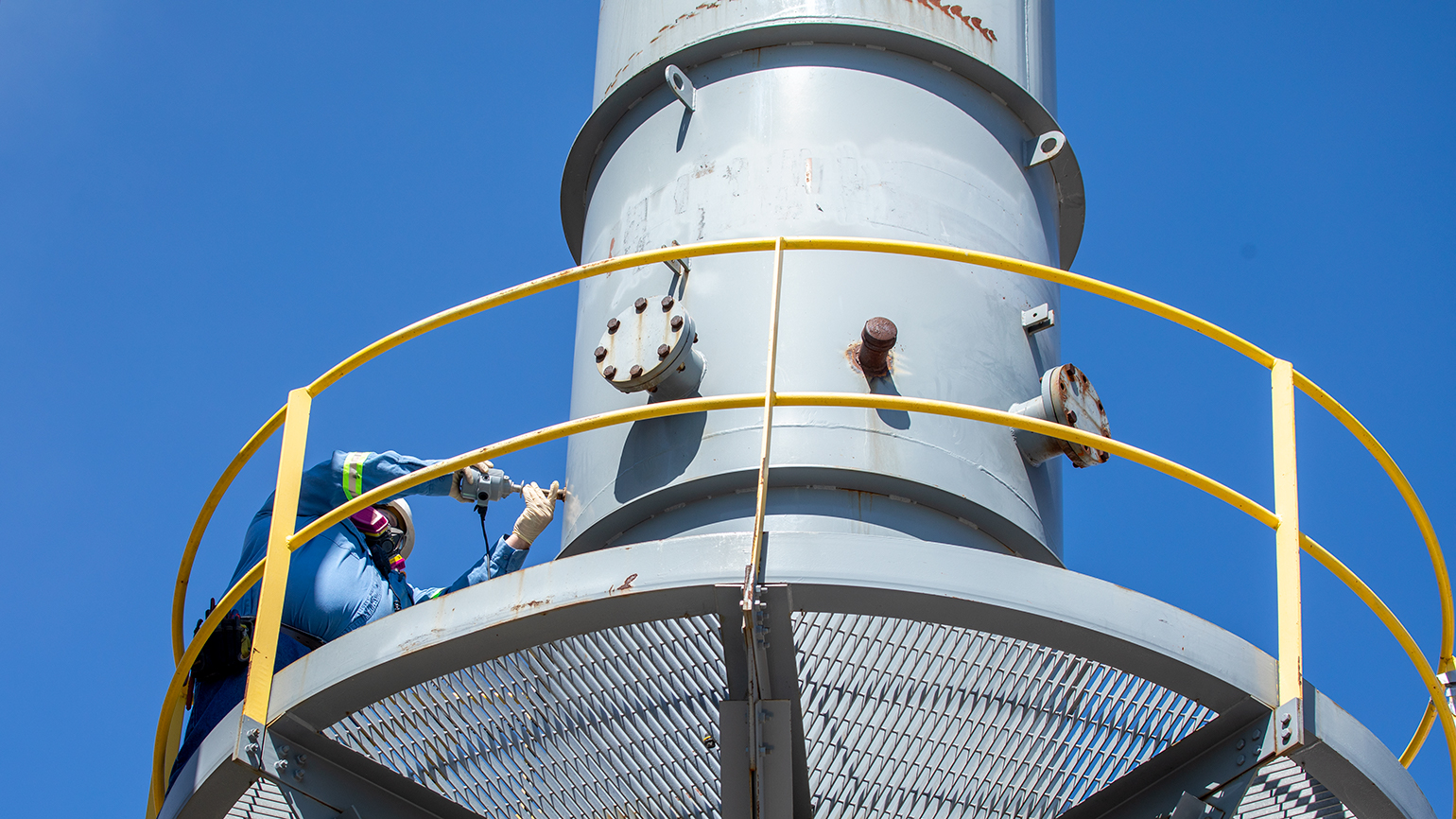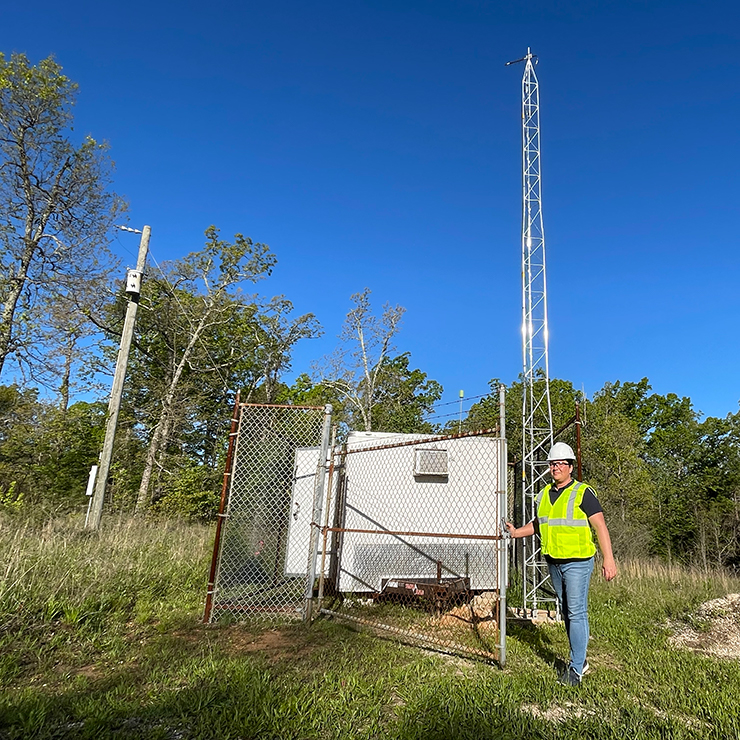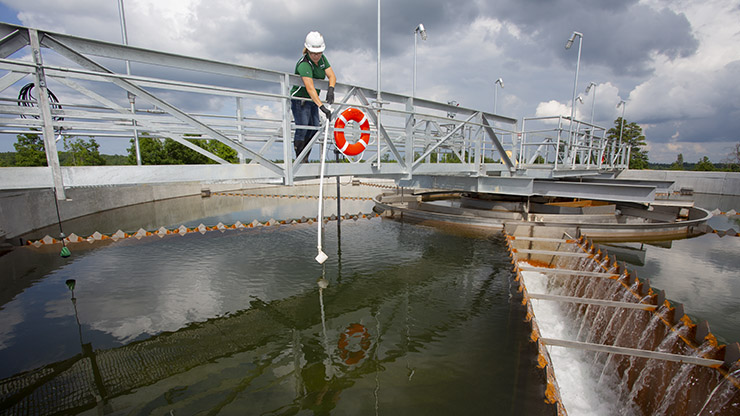Managing Our Environmental Impact
8 Jun 2021

Managing the environmental footprint of our operations is critical to being a sustainable company. As one of our core values, we strive to protect the natural resources in our care and those we share with our communities.
For Doe Run, much of our environmental management focuses on reducing air emissions and protecting water quality through measuring, monitoring and treating water to meet permitted levels for water discharges. Our environmental specialists work closely with regulatory agencies, like the Environmental Protection Agency (EPA) and Missouri Department of Natural Resources (MDNR), to meet our shared goals.
“Over the years, we have upgraded our infrastructure, invested in smarter data systems and enhanced employee training so everyone understands the role they play in reducing our environmental impact,” said Kevin James, environmental compliance manager at Doe Run. “We are committed to meeting regulatory requirements and improving our processes.”
Protecting Air

A key part of environmental management is monitoring and measuring air emissions at our facilities. This is especially important at the Resource Recycling facility, where we use a smelting process to recycle lead batteries and other lead-bearing materials to recover essential metals and return them to new use.
We sample our air emissions regularly, both at our stack and just beyond our property line. Specialized testing firms are brought on-site annually to measure the amount of lead and other parameters in the air coming from stacks, and determine how efficiently our baghouses and other control devices are operating. A network of ambient air monitors measure lead and sulfur dioxide concentrations. These monitors are located just beyond our rurally located facility. Although there have been recent challenges with in-plant measures and controls, this monitoring demonstrates that we have been able to meet the national ambient air quality standards for more than 40 consecutive months.
Proactive planning and preventative maintenance are required to produce consistent, reliable air measurements. Air monitoring measurements are very small, usually in the parts per billion, and require specialized equipment and analysis. Environmental team members plan testing and maintenance events six to 12 months in advance in order to adequately prepare and keep the systems running smoothly.
“Outside auditors have said that our air monitoring approach is one of the most robust they have seen, but we continue to look for ways to improve with smarter technology, like a new continuous emissions monitoring system (CEMS) that provides real-time data on our stack emissions,” said Amber Morris, environmental instrumentation specialist at Resource Recycling facility. “The new CEMS technology self-identifies any potential issues and enables us to quickly address them so we can continue to accurately measure emissions.”
Doe Run has made several investments to improve the infrastructure at Resource Recycling, which have helped to better manage air quality. This includes enclosing much of the plant and adding negative pressure ventilation systems to reduce the potential of fugitive emissions. We also installed new baghouses and ventilation systems to collect lead particles and other airborne materials.
“Over the years, we have upgraded our infrastructure, invested in smarter data systems and enhanced employee training so everyone understands the role they play in reducing our environmental impact. We are committed to meeting regulatory requirements and improving our processes.”
Kevin James, environmental manager at Doe Run
Water Management

Water is essential to Doe Run’s operations. We use water in the milling process to produce lead, copper and zinc concentrates from ore, and on average, more than 36 million gallons of water per day flow naturally into our mines. This water needs to be pumped aboveground, where it is either used in our milling process or treated so we can return it to the environment.
We take great care with our water because the abundant natural water sources in the area are essential to the local economy and the outdoors-loving community in which we operate.
Across the Viburnum Trend, Doe Run has built a network of ponds and dams that hold any water pumped from our mines or that comes in contact with our operations. This water may travel through several storage areas before it reaches one of our five water treatment plants, where it is treated to remove metals and meet permit limits so it can be safely directed to nearby streams. Each year, our Southeast Missouri Mining and Milling Division (SEMO) treats approximately 20 billion gallons of water through this process.
“When it comes to water, our approach is about achieving balance across the Viburnum Trend,” said Kris Bieker, water treatment specialist, at SEMO. “Maintaining multiple storage ponds and treatment plants gives us the ability to adjust our capacity so no one location becomes overburdened, and we can continue to meet our permit requirements.”
Data is key in helping us manage our water. In 2020, we implemented a Pi Historian data system that provides real-time data about our water levels and capacity at each site. The entire database can be accessed remotely to help us resolve any issues before they escalate. For example, during heavy rainstorms, our environmental management team can monitor water levels continuously – even from home during off hours – and can make adjustments as needed. The system also enables us to provide daily water management reports to leadership so they can make better decisions about our mining and milling operations.
Environmental Management Systems
Our team of environmental employees uses several tools and processes to ensure we maintain environmental compliance. One of the most comprehensive tools we use is the Environmental Task Management System (ETMS), which helps us efficiently collect data and keep track of environmental requirements. This system is regularly updated as new permits are issued and new regulations are enacted.
We also hold International Organization for Standardization (ISO) environmental certifications for Resource Recycling and all of our mine and mill sites. To earn these voluntary certifications, our operations implemented environmental management systems at each site, which include using root cause analysis to identify and address issues before they become problems. As a part of the ISO certification process, we undergo third-party audits of our systems, which provide an outside expert’s perspective to help us evaluate our techniques, discuss new practices, and work towards continuous improvement. Learn more about our ISO certifications here.


